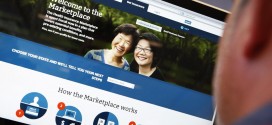By Gaylord Garcia
For decades, data on Asian Americans and Pacific Islanders have been insufficient and lackluster. The AAPI community has been left out of deep and rigorous researches that focus on race and ethnicity, according to ColorLines. As a result, there isn’t much broad statistical data available on the AAPI population and when a research is released to the public about the AAPI community, its credibility is heavily questioned.
Congresswoman Judy Chu categorizes the AAPI community as “one of stark contrasts, with significant disparities within and between various subgroups. The ‘Asian Pacific American’ umbrella includes over 45 distinct ethnicities speaking over 100 language dialects.” So when the Pew Research Center released a comprehensive report in 2012 about Asian Americans, and how the research hailed Asians and Asian Americans as the “model minority” for being the highest-achieving racial group in the country, it unequivocally drew widespread criticism. Chu said “Many of the groups that were excluded from this report are also the ones with the greatest needs.”
In an effort to not only propel research but “credible” research and analysis on the AAPI community, the White House Initiative on Asian Americans and Pacific Islanders (WHIAAPI) in collaboration with Data.gov rolled out a comprehensive hub of government data on AAPIs at Data.gov/AAPI. The wealth of information from the website contains approximately 2,000 data sets and reports from roughly 50 federal, state, city, and county sources that will certain offer an important glimpse into the often overlooked and underreported experiences of the AAPI community.
Here a few surprising facts that emerge from the data:
- AAPIs have the lowest utilization rates of mental health services among all minority groups.
- Pacific Islanders having the highest unemployment rates of all racial and ethnic groups.
- In just five years, the number of small businesses owned by Asian Americans grew by 40%.
- The AAPI population will more than double to over 47 million by 2060.

Kiran Ahuja, Executive Director of the WHIAAPI said, “The launch of Data.gov/AAPI marks an important milestone for better understanding and responding to the complex needs of AAPIs, now the fastest growing racial group in the country.”
The comprehensive hub of government data on AAPIs at Data.gov/AAPI also aims to disaggregate or break up the data across all sources to have a more comprehensive understanding of the AAPI community. For example, despite the perception of AAPIs as academically high achieving, data shows that Asian Americans and black students have the highest enrollment rates in remedial courses in the country. The disaggregation of data also shows that only one in seven Native Hawaiian and Pacific Islanders has a university degree. ” We hope that this effort propels new research and analysis to more clearly define the needs of AAPI subgroups and create more effective policies and programs to better serve the community in the long term,” said Ahuja.
Christina Bui, a student and chairperson of the DC chapter on the East Coast Asian American Student Union National Board said, “The data centralization at data.gov/AAPI is really crucial to the AAPI community. I have personally done research papers for my classes on AAPIs and it was always a challenge trying to find consistent and reliable data.” Bui also added, “ If it’s widely disseminated and publicized, perhaps other organizations and individuals will pick up on the trends that the data reveal and advocate on behalf of the community.”
The White House Initiative on Asian Americans and Pacific Islanders was reestablished when President Barack Obama made clear the necessity to promote evidence-based research, data collection, and analysis on AAPI populations and subpopulations under Executive Order 13515 in October 2009.
 Asian Fortune Your source for all things Asian American
Asian Fortune Your source for all things Asian American



